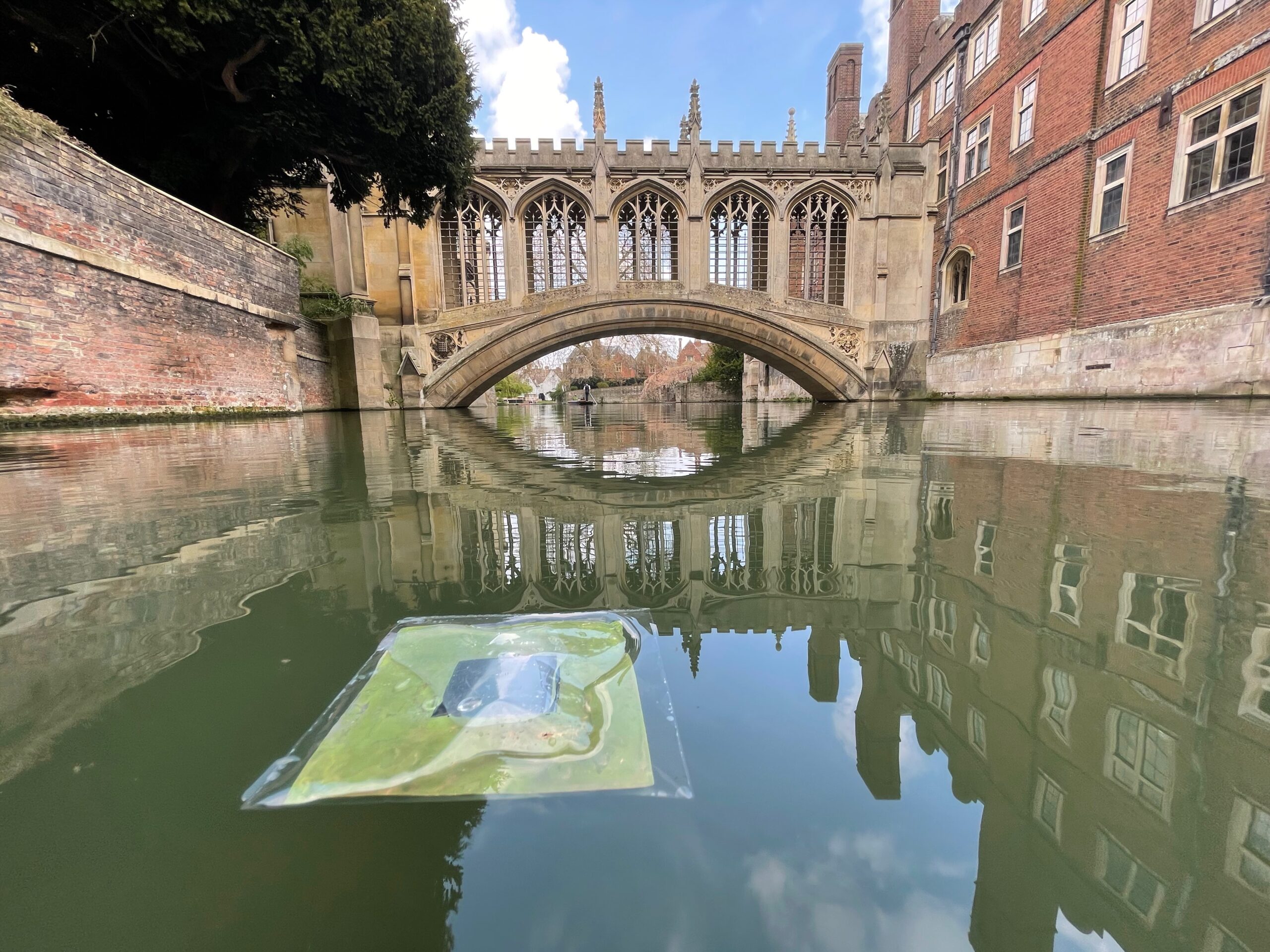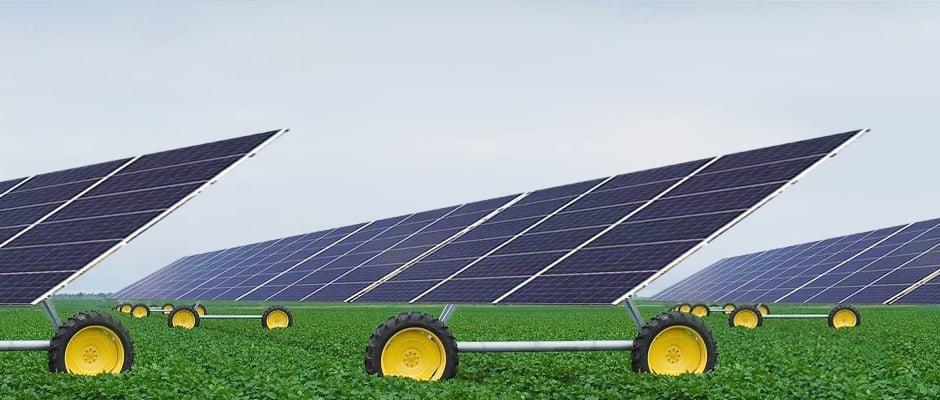
When hearing the word photosynthesis, our memory probably recalls elementary school days, when we likely first learned about it. For those who may have forgotten, it’s the phenomenon that allows leaves to capture sunlight to convert water, carbon dioxide, and minerals into oxygen and sugars. This straightforward yet effective process can be adapted to address one of the most pressing priorities of today: the quest for environmentally friendly energy alternatives. Which is precisely what researchers at the University of Cambridge, United Kingdom succeeded in doing. They recently introduced a floating artificial leaf which is capable of producing a form of sustainable fuel as efficiently as tree leaves produce oxygen.
The leaf scholars have unveiled the 2.0 version of their concept. In fact, back in 2019 they had introduced a bulkier one, which featured thicker anti-moisture coatings. Drawing from expertise and from materials used in the microelectronics realm, they came up with a 15-fold thinner concept, which now has the ability to float. These ‘leaves’ can be installed at sea, consequently, without the need of using land to generate power.
“We were inspired by the progress made in the electronics industry and tried to apply a similar approach to our field. So, we switched to lightweight solutions that helped us make a device that, not only works but also looks like an actual leaf,” explains Dr. Virgil Andrei. He works at the University of Cambridge’s Yusuf Hamied Department of Chemistry and co-authored the study.

Mimicking nature
What does an artificial leaf look like? In the case of the Cambridge one, it’s a small square. A yellow light absorber is fitted on the edges which produces oxygen from water. In the middle, a darker material – perovskite, also used in solar panels – reduces protons to hydrogen, or CO2 to syngas – synthetic gas. Collecting and storing gas is done with the use of a plastic bag, which catches the products the device emits.
Much the same as is the case with trees’ leaves, two light absorbers are combined with matching catalysts. When immersed in water, a light absorber triggers the catalyst – cobalt in this case – to produce oxygen. At the same time, the other light absorber-catalyst pair converts carbon dioxide and water into carbon monoxide (CO) and hydrogen, thereby creating syngas.

Almost immediate impact
Syngas is a compound made up of hydrogen, carbon monoxide, and carbon dioxide. Since the early stages of this research project, researchers have focused on this gas. This is why it’s one that potentially has the biggest impact in the short term. In fact, it mainly works as an intermediary for the generation of other fuels, such as methanol and liquid fuels – as well as in the making of plastics and pharmaceutical products.
Andrei: “Syngas is a key element. For instance, it is behind the synthesis of liquid car fuels. Since we still rely on combustion engines, fuels are still needed to operate those. Our technology enables the production of green syngas, which could also offer a sustainable alternative to petrol.”

Virgil Andrei
Research fellow at the University of Cambridge
He co-authored the study on artificial leaves.
While hydrogen is easier to make, it perhaps may not have the same impact at the moment as those fuels that run present-day engines. In a sense, accommodating the green transition also involves bridging the gap before the green transition is achieved by providing usable alternatives.
Water-preserving floating parks
The technology is scalable – indeed, there are no limits to these floating artificial leaves – and they could be put to use on remote islands and in coastal areas. In places where solar and wind farms are not feasible, floating leaves could serve as a backup. “Turrets could be built to store gas, so the leaves can float freely,” Andrei suggests. More solutions to manage gas production will emerge as the technology is demonstrated on a larger scale.

Moreover, the Cambridge leaves have yet another advantage: they reduce the amount of water that evaporates. “Covering the surface of water with panels means that less light is able to warm it up – and consequently this reduces evaporation. If you think of lakes and the sea, this could affect plants growing in the water. But if you give the leaves enough space in a suitable area, this is no longer a problem. In the case of irrigation canals – where there is less biodiversity – floating leaves can help retain some of that water,” Andrei stresses.
No sun, no problem
Not all days are sunny, of course. Yet Cambridge’s floating artificial leaves can continue to operate even on cloudy and rainy days. Although this does change the output. “On cloudy days, the photocurrent – the amount of electric current flowing through a light-sensitive device – is lower as it is proportional to the light intensity. The lower the amount of light, the lower the current. In both studies, we observed how this led to better selectivity in terms of carbon dioxide reduction,” the researcher adds.
At low light intensities, more of the existing charges have a tendency to reduce CO2 to carbon monoxide, as has been observed by Cambridge scientists. In one way or another, every day has the potential to be a fruitful one.

Leaves always help
In many respects, artificial leaves mimic natural leaves. What’s more, they also come into close contact with animals. Scientists tested the leaves themselves in the waters of the Cam River, where ducks and geese populate the area. “Ducks thought we were feeding them. They flocked to them and we had to fend them off a bit. A tougher external plastic could prevent wildlife from chewing on the leaf,” Andrei notes.
It’s too early to say when a floating park of artificial leaves will be established. “We now know that the technology is compatible with scalable manufacturing methods, but we haven’t looked at scaling it up yet. That is going to take time. Since it is a modular technology, we won’t need to make large leaves. Instead, it makes more sense to arrange several of them in a series. Other aspects are also on our minds. Improving stability and performance levels are also high on our list,” Andrei states.
As natural leaves are already a powerful ally for a greener economy because of their ability to store carbon, then artificial leaves could well be one of the things responsible for curbing global CO2 emissions.

